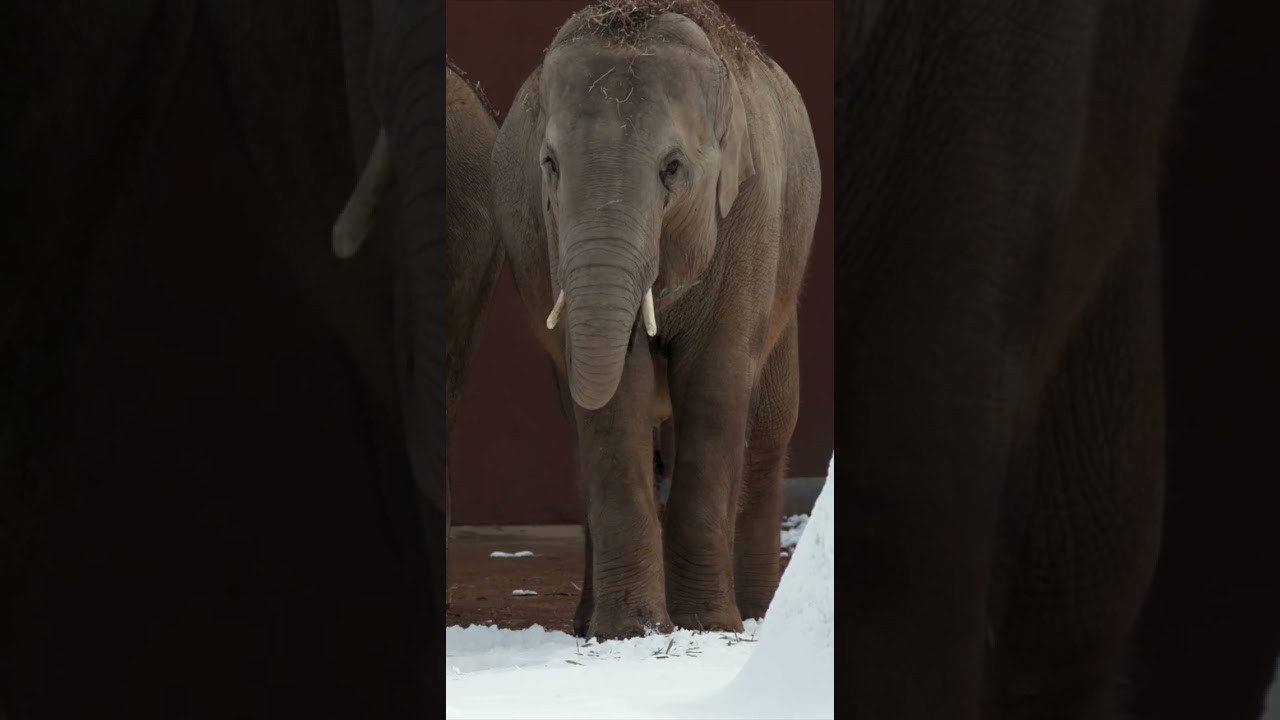– Witnessing the wonder of elephants experiencing snow for the first time at the Cincinnati Zoo.
– Exploring the behavioral responses of elephants in new environmental conditions.
– Understanding the importance of enriching experiences for captive elephants.
– The role of zoos in conservation and education efforts.
The following is a corrected and clarified version of the text:
The first snowfall is often an enchanting experience, transforming familiar landscapes into something new and foreign. For some of the inhabitants of the Cincinnati Zoo, the snowflakes drifting from the sky were a moment of pure enchantment, especially for the young elephants who experienced winter for the first time. Observing them, one cannot help but be reminded of their initial encounters with the soft, cold blanket covering the Earth in the colder months.
But what is happening here? Why is watching these majestic creatures frolic in the frost so captivating? And what does it say about their care, environment, and connection with nature’s rhythms?
When young elephants first feel the caress of snowflakes on their hides, it’s a scene filled with discovery and play. Elephants are intelligent, curious animals with complex emotions and behaviors. Watching how these young elephants interact with their snowy environment provides insight into their cognitive abilities and their capacity for joy and wonder.
For example, the elephants may trumpet excitedly, lifting the fresh snow with their trunks and tossing it with childlike glee. This isn’t just a spectacle; it’s a vital part of their development. Elephants in the wild often use materials in their environment to explore and learn. This snowy playground is a vital enrichment for their captive counterparts, allowing them to engage with novel stimuli and keep their minds sharp and spirits high.
But this snow day is about more than play. It highlights the conservation and educational endeavors of organizations such as the Cincinnati Zoo. These facilities are responsible for caring for their residents and demonstrating the wonder of these animals to a curious public.
A bridge is built between humans and wildlife in the gentle undulation of an elephant’s trunk through the snow. Onlookers are offered a visceral reminder of the common joy found across species. It is a teaching moment without words, an illustration of the importance of understanding and appreciating the other inhabitants of our planet.
However, in crafting these experiences for the zoo’s residents, one must also consider the importance of natural behavior. Elephants have evolved over millennia to thrive in diverse habitats, from the woodlands and savannas of Africa to the dense forests of Asia. Although none are native to snowy climates, their innate curiosity often means they can adapt their behaviors to various conditions. Zoologists consider this closely when introducing new experiences to animal enclosures.
Environmental enrichment is a key concern in the zoo’s ethos. It nurtures the psychological well-being of these sentient beings and ensures that their lives in captivity are as fulfilling as possible. While we might marvel at their playful antics, each interaction with their enclosure is deeply important for their health and well-being.
In conservation, institutions like the Cincinnati Zoo serve as sanctuaries for many species, some facing dire threats in the wild. The elephants are ambassadors for their wild kin, drawing much-needed attention to conservation challenges and the protection of natural habitats. With each visitor in awe of these creatures, there is an opportunity to inspire and plant the seeds of stewardship for our planet’s biodiversity.
This point extends to all aspects of the zoo’s operation. Education programs, conservation initiatives abroad, and sustainability efforts at home – these all form the multifaceted mission of the modern zoo, extending well beyond the immediate care of the animals within its care. Zoos have evolved into conservation science, research, and wildlife education hubs.
As the young elephants tentatively step into the powdery snow, their ears flapping with merriment, it’s not just a moment of amusement. It’s a call to acknowledge their intelligence, to connect with their experience, and to consider our shared responsibility for protecting such extraordinary creatures. This snowy encounter is a reminder of the delicate balance between wildlife and human activity. It is a spectacle that holds within it the threads of a much larger narrative about conservation, empathy, knowledge, and respect.
Through our shared delight in the simple joys of a snowy day, there’s a hope that understanding and compassion for our planet’s wildlife will deepen. Witnessing the young elephants interact with the snow is a reminder that we must strive to understand and appreciate the other inhabitants of our planet so that we can protect and preserve them for generations to come.
*****
Source Description
Young Dublin Elephants 1st Snow – Cincinnati Zoo #shorts
http://support.cincinnatizoo.org/donate
Subscribe: https://www.youtube.com/user/CincinnatiZooTube/featured
Facebook: https://www.facebook.com/cincinnatizoo/
Twitter: https://twitter.com/CincinnatiZoo
Instagram: https://www.instagram.com/cincinnatizoo/
Find out more at http://www.cincinnatizoo.org

